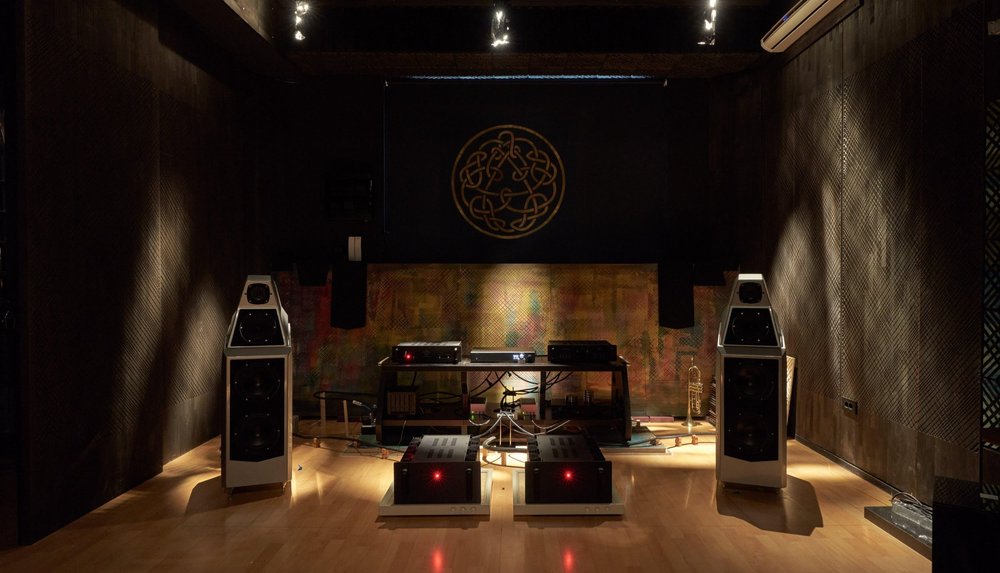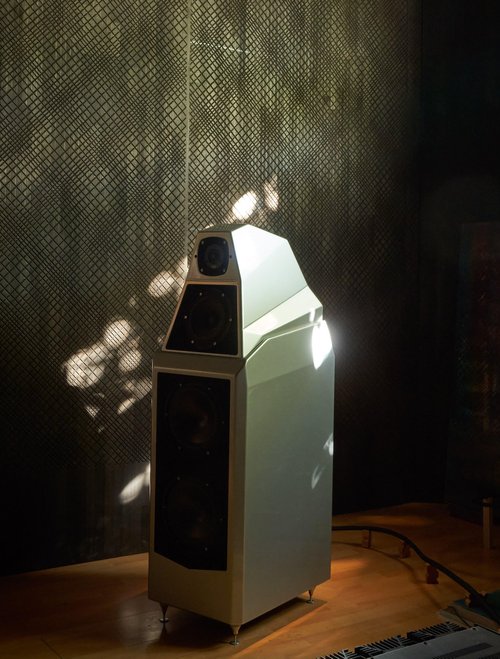
This instalment of “No, I have the best system in the world!” comes to you from Bucharest, Romania—the farthest place yet from which we’ve featured a system. When Romanian citizen Ciprian emailed us asking if he could participate in our column, it made us feel all warm and fuzzy inside. It was more proof that our hobby is a unifying force, and that we are truly a family, no matter how far apart we live from each other.
Exactly how far is Bucharest from PMA’s Montreal base of operations? 7275 kilometres, or about a 9-hour flight. A southeastern European country of 19 miilion people, Romania shares a border with Ukraine and was once occupied by the Soviet Union. “We’re a bit nervous” was Ciprian’s answer, during our Zoom chat, when I asked what the general mood was in his country. It’s a testament to our hobby’s power that it can offer Ciprian some comfort while a war is raging next door.
And not just comfort to Ciprian, apparently. Bucharest is in the midst of a burgeoning audiophile scene. “There are more audio stores now,” Ciprian said. “For the longest time we had a per capita income very much below that of the West, so we didn’t have money to buy high-end products. But that’s changing. Our dealers are offering in-home trials so people can borrow equipment. I have Romanian friends who work abroad, who said that in France or Spain, the dealers don’t lend their equipment. Maybe we’re more open here, but I think it’s good for business to let people hear the equipment first. The hobby is growing fast here.
“Of course, because we made so little money, we started very low. We have a lot of room to grow.”
I asked Ciprian when the audio bug bit him. “Five years ago,” he said. “Before that I was under the impression audiophiles were people who only listened to the same recordings over and over to see if they could hear a little difference in sound here and there. I was a music lover, and in my heart I’m still a music lover. I listen to a lot of different music—Nine Inch Nails, Metallica, Pink Floyd, King Crimson, symphonies, and I knew my music well. I was passionate about it.
“Then, five years ago, I visited a store to buy cheap speaker cables for my home cinema, and, out of curiosity, I listened to a modest hi-fi setup there—I don’t think it cost more than $5000. I was blown away. From there, I spiralled into the high-end.”
Ciprian’s system today, not to mention his listening room, is anything but modest. It includes a pair of Wilson Audio Sasha W/P II, powered by LAMM M1.2 Reference monoblocks, a LAMM L2 Reference preamp, a Weiss DAC502-4ch DAC and UPNP renderer / Roon endpoint, a Synology 921+ used as a music server, a Ubiquiti 12F Edge switch, Weiss PSU101 discreet power sources for the switch and server, Allied Telesis media converters and SFP modules (for galvanic isolation of the network gear), R-03 rack and amps stands from Romanian manufacturer Music House, and Siltech 35th Anniversary Crown series signal cables and power cords.

I asked him what performance attributes he was looking for from his system. “Good timing, correct reproduction of attack, sustain, decay. Sound duration and reproduction of micro- and macro-dynamics are the most important aspects to me.
“More specifically, I want the musicians to sound like they’re there. I want to sense their presence in my room. I also want the system to recreate, if it’s there, the recording space—whether at the studio or live venue. To get this right, I went to a lot of live concerts, from jazz clubs to symphony halls, to study what I was experiencing.
“I wanted to be able to listen to my system and not hear the dimensions of my listening room, but those of the different spaces that captured the performances. It was very important that I be able to imagine I was there when it happened.”
Was this why he went so far as to hire a room acoustics expert to design his listening room—so that his room could disappear? “Sure,” he said. “You can drive a tractor through rough terrain, but not a Lamborghini because it’ll get stuck in the mud. It needs a smooth road to perform its best. Conversely, if you have the best room but don’t have the proper equipment, you won’t hear the room’s potential.
“But it takes more than room acoustics,” he said. “To have realistic sound, you need to take care of everything—the equipment, the anti-vibration devices, the cabling. They all play a part in making the music sound ‘live’.
“When I went to all those concerts, it wasn’t to study just the sound, but my emotional response, like when you hear a drum kick—maybe you feel a sudden fear and flinch. I wanted my setup to be able to replicate those emotional triggers.
“You can dissect the sound with terms like transients and sustain and things like that, but that’s technical,” he continued. “It’s good to have technical objectives. But more important to me was to narrow the gap between what I felt at a concert and what I felt in my listening room. The smaller that gap became, the better my system sounded.”


Had his priorities changed since the beginning of his journey? “At first, I was after better timbres and musicality, then as time passed I put more emphasis on imaging, focus, and the soundstage. Not necessarily to have a big soundstage on every track, but if there’s a soundstage on the recording, it should be focused and realistic. I want to see the musicians play in front of me, like at a live event.
“What also became important was musical timing and fast transients—for a system to reproduce the correct duration of sounds. I want to be able to make out the playing techniques of the musicians, like John Bonham’s complex rhythms or a soprano’s tremolo. If your system’s timing is off, you can miss those kinds of details.”
Favourite tweak? “The tweak that made the biggest difference in my home—maybe because my amps are so power hungry—was connecting my system to a dedicated power line. It was the biggest improvement by far.”
I asked for his general impression of audiophile cables. “I’m a believer,” he said. “If I can use another car metaphor—it would be a waste of money if you installed tires optimized for speed and performance on your Ford Fiesta because you wouldn’t get the benefits those tires can provide. But put those tires on a Formula 1 and you will notice the difference. An otherwise excellent system can’t play to its potential if it doesn’t have the proper tires, so to speak.
“You have to keep an open mind in this hobby. If three years ago someone had told me that a DAC could take 3 months of regular listening to burn in, I would have thought it was BS. But once you go through it—when your system is resolving enough to reveal it—you can hear the change if you pay attention. It’s the same thing with the IEC connector on a power cable.”
Any advice he wanted to share? “After a lot of testing, my friends and I discovered that some industrial grade network devices outperform those of popular audiophile streaming brands, especially when combined with galvanic isolation and external power sources.”
I asked how happy he was with his system now. Would he be content for a while? “I’m very grateful,” he said, hands clasped in front of him. “If I stop now, I’ll be happy. Of course, I don’t know for how long.
“But there’s a lot of satisfaction. I know audiophiles who have great systems but they always want to change their equipment. This isn’t my style. I prefer the destination—the journey can be too full of frustrations.
“What I enjoy about my system is that it can play all types of music. Small bands to symphonies. You can’t play large-scale symphonies properly with the wrong setup. If you have a system that can play all types of music, more musical worlds will open up to you.”
Who wouldn’t want that?
Price list:
- Wilson Audio Sasha W/P II ($29,500 / pair)
- LAMM M1.2 Reference monoblocks ($23,890 / pair)
- LAMM L2 Reference pre-amp ($13690)
- Weiss DAC502-4ch DAC ($9995)
- Synology 920+ as music server ($550)
- Ubiquiti 12F Edge Switch. ($250)
- Weiss PSU101 discreet power sources for switch and server ($1900 / each x 2)
- Allied Telesis media convertors and SFP modules MC ($300 / each x 3, SFP $175 / module x 3)
If you have a system you’d like to talk about in our “No, I have the best system in the world!” series, let us know by dropping us a line here.










Leave a Reply